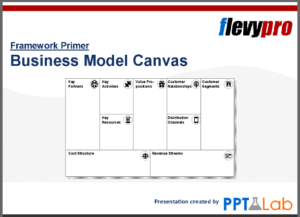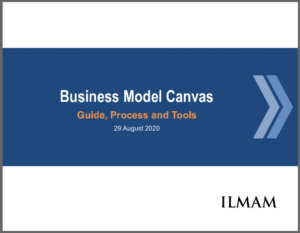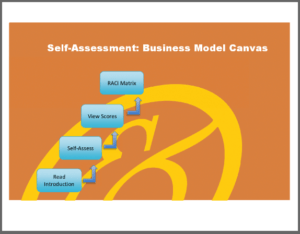‘Customer Relationships’ is the fourth block in the business model canvas. Thinking through the Customer Relationships portion of the business model provides an opportunity to make choices that optimize capabilities for acquiring, retaining, and growing customers.
This post covers where Customer Relationships fits with other blocks of the business model canvas, different types of target Customer Relationships, and strategic and execution approaches.
Customer Relationships and the Business Model Canvas

‘Customer Relationships’ sits on the Value Creation side of the business model canvas. It is preceded by customer segment(s), value proposition, and channels.
The Business Model Framework is largely credited to Alexander Osterwalder and Strategyzer. To supercharge your understanding of business models, I recommend his book, “Business Model Generation: A Handbook for Visionaries, Game Changers, and Challengers”.
Customer Relationships grow by carefully integrating what the business wants and offers with what the customer wants and expects.
The purpose of the Customer Relationships block on the canvas is to provide a space to capture how the business will acquire customers, retain them, and grow sales and the customer base. Here is a brief description of each of these three drivers of Customer Relationships:
- Customer acquisition – What are the various ways a business uses to acquire customers?
- Customer retention – What specific tactics will help to retain customers?
- Boosting sales – What activities and capabilities will enable the business to scale?
These three strategic drivers are covered in more depth under the strategy heading below.
Thinking through the Customer Relationship block deeply influences customer experience. It sets the direction for designing the target Customer Relationships. This includes through how Customer Relationships integrate with different parts of the canvas, especially customer segments, channels, value proposition, partners, cost structure, revenue streams.
A good strategy for Customer Relationships helps to build trust and brand reputation with customers. It balances the reality that the cost of acquiring new customers is much greater than the cost of retaining customers. And it fuels realistic expectations for growth.
Finally, Customer Relationships work is never complete. The key is to develop and test hypotheses around Customer Relationships and adjust or pivot as required.
Types of Customer Relationships Formed With Each Customer
 There is a whole spectrum of Customer Relationships, from highly impersonal to closely personal, or from low touch to high touch.
There is a whole spectrum of Customer Relationships, from highly impersonal to closely personal, or from low touch to high touch.
- Self service – This is a basic ‘transactional’ relationship, where the relationship is minimal. An example is an airport kiosk, which supports an impersonal one-time sale – which is all that is needed.
- Automated services – This is still largely low touch, but provides some automated personalization based on customer history and other information. Customized processes can offer tailored information and personal choices to the customer. Automated services exist online as well as over the phone. An example is ordering vitamins online.
- Communities – Communities can be in person or online, but the most growth by far is online. Usually the business creates and owns the community infrastructure. Customers participate and can learn from the experiences of each other. The business can also learn by observing and participating, and can facilitate conversation. Businesses can also provide information and experts to enhance the community.
- Personal assistance – Customers can access a real person, whether in person (a retail store), on the phone (a call center rep), or online (sales or support assistance).
- Dedicated personal assistance – This is where a representative is assigned to specific customers. Banks and casinos, for example, often assign personal representatives to customers that meet a certain profile level. Businesses use this to build a deeper connection and build trust.
- Co-creation – Customers actually have a say in the design of products, delivery, and other aspects of the product or service. Sometimes, such as in network effect businesses, the customers actually ‘create’ the product as they participate. Co-creation creates a virtuous cycle for both customers and businesses.
Note that a business will often integrate multiple types of Customer Relationship types together into a unique integrated system – a unique value chain – for acquiring, retaining, and growing customers.
Strategy: Deciding How to Acquire, Retain, and Grow Customers
Strategy involves making choices – tradeoffs – among different ways of doing things. Customer Relationship management is a big part of the value chain.
—————————————-
I recommend these strategy resources on FlevyPro (paid links):
| Business Model Canvas 140-slide PowerPoint deck and supporting PDF  |
| Business Model Canvas 22-slide PowerPoint deck  |
| Business Model Canvas: Guide, Process and Tools 43-slide PowerPoint deck  |
| Business Model Canvas – Implementation Toolkit Excel workbook and supporting ZIP  |
—————————————-
Here are some strategic value chain techniques that can be made around the three drivers of Customer Relationships:
Customer acquisition
- Produce relevant content – Blogs, forum, and related content are opportunities to share ideas and provide information that connects with customers. They can also be a means to receive feedback and build community.
- Email communication – Building a list of potential customers – and new and existing customers as well – provides the opportunity to email helpful ideas, information, and offers that build relationships, progress customers through the buying decision, and generate orders.
- Social media participation – Social media is used by many businesses to provide support, but it can also be used for to engage with customers who may consider your products and services. It is also a place to learn and gain valuable feedback from observing discussions as well as having direct conversations.
- Use of customer analytics – Analytics regarding all aspects of engagement – pages viewed, new vs returning users, time on a page, purchasers, responsiveness to site changes, etc – are important for monitoring and gaining insights.
- Other marketing channels – Content needs to be coordinated so that the message, ideas, and details are consistent. See information on communication channels in our post of channels in the business model canvas.
Customer retention
- Social proof – Social proof helps win new customers, but also helps to retain existing. It reinforces a customer’s belief that they are making, or have made, the right decision. Customers also feel more involved when they provide testimonials.
- Customer engagement – Keeping touch with customers through various means enables the business to identify inflection points when preferences are shifting or new issues are emerging.
- Continuing education – Providing opportunities for continued learning related to the products and services adds continued value and customer delight for existing customers.
Boosting sales
- Systems that scale – One of the most popular software applications is for Customer Relationship Management (CRM). CRM systems help orchestrate, coordinate, and scale the sales effort, and from multiple channels.
- Market size – A key determinant of sales potential is market size. Strategies to increase sales need to be in line with the market potential.
- Appropriate strategic approach – Choosing the strategic approach – such as one of the three generic strategies – drives thinking based on grounded principles and reality.
Each activity related to acquiring, retaining, and growing customers has a plethora of choices for how to build Customer Relationships. Customer Relationship activities in the value chain are key building blocks for the business model and unique value the business is offering customers.
Impact of Customer Relationship Strategy on Project Management

The choice of strategy on acquiring, retaining, and growing customers impacts project portfolios, programs initiated, and projects selected and implemented. Here’s how:
Types of projects:
As the projects will support the business model, a portion of the projects will support the Customer Relationship strategy of the business. These projects will include areas such as CRM systems, customer support systems, and other system related projects. They may also include construction projects, such as building branches, stores, or other types of physical locations.
Project metrics:
The project metrics will naturally include schedule, cost, and quality metrics. Beyond that, what are the metrics needed by the business to ensure the project is on track for building some aspect of the Customer Relationships block of the business model? What interim metrics might show progress toward goals? Are there metrics that also might show progress toward integrating Customer Relationships with other blocks of the business model canvas, such as customer segments and value proposition?
Value vs cost approach:
Similar to the focus on progress metrics, to what extent can the projects be measured by the value they are adding? Should they only be looked upon as a cost center? While the project itself may just be a cost, it must be executed toward a target of creating value for the customer.
You can quickly and conveniently work through the Customer Relationships and other components of the Business Model Canvas with the Lucidchart Business Model Canvas template (Try for free) – recommended!
—————————————-
I recommend these PM templates (paid link):

—————————————-
Conclusion and Further Resources
Please share any experiences, insights, or feedback about the Customer Relationships block in the business model canvas.
To supercharge your understanding of business models, I recommend “Business Model Generation: A Handbook for Visionaries, Game Changers, and Challengers” by Alexander Osterwalder.
I recommend this short video for a good overview: “Business Model Canvas: Customer Relationship” by Steve Morris, StartupSOS.
